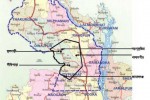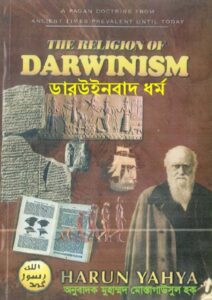
Coal in Phulbari, Birampur – Economy and Politics.
Coal is the most highly used source of energy for generating power in the world. Although, it has adverse environmental impacts, it is so widely used mainly because it is relatively cheap, abundantly available and readily fits with traditional power generation technologies. It is extracted from mines using both underground and surface mining techniques – either of them having advantages and disadvantages. Surface mining methods (i.e., open pit, strip or mountain top) are implemented in areas that are remote from human habitations and civic amenities (e.g., mountainous regions of British Columbia, Canada). In surface mining a larger proportion of deposits can be commercially extracted compared to underground mining. But, surface mining severely alters the landscape, which damages environmental value in the surrounding land.
Bangladesh has small coal reserves, and has consumed little coal in the past. Bangladesh began commercial coal production in April 2003 with the opening of the Barapukuria Coal Mine, which is expected to produce one million short tons of coal per year (Mmst/y), principally for electricity generation. This mine is being used to fuel the 250-MW Barapukuria Coal-Fired Power Plant in Parbotipur, which began commercial operation in January 2006. Another possible coal mining project at Khalashpir is under consideration as well.
Despite Bangladesh’s small reserves, the government has recently promoted the development of coal to ease its reliance on natural gas for power generation. Although estimates vary, Bangladesh’s Energy Ministry judges that the country has up to 3.3 billion short tons of high-quality coal reserves. Energy value of it is 35 -40 TCF gas.
Coal Mining in Bangladesh
During the last few years several high quality deposits of coal have been discovered in the northern part of Bangladesh which spends a big part of its foreign exchange earnings for importing oil. It has about 6.5 tcft proven and probable deposit( 2009) of natural gas which is being rapidly consumed for power generation, industrial and domestic use. Therefore, the government wants to utilize coal for power generation in order to reduce dependence on natural gas. A list of locations with their known coal reserves is given in Table 1, and their relative locations are shown on the map of northern Bangladesh in Figure 1. The coal mine in Barapukuria is already in operation and it supplies about 3000 tonnes of coal per day to a nearby 250 MW power station. This is an underground mine using shaft technology and therefore did not require relocating local inhabitants. However, debate is going on about the development of the other mines regarding the use of appropriate mining techniques. If open pit method is eventually selected (as suggested by Asia Energy) for the Phulbari coal mine, about 50000 inhabitants from the area would have to be relocated.
Coal Fields in Bangladesh: Reserve Data
|
Proven + Probable Reserve(mil.Tones |
Proven Reserve (million tones) |
Depth (meters) |
Year of Discovery |
Location/Field |
|
390 |
303 |
118-509 |
1985-87 |
Barapukuria (2) |
|
685 |
143 |
257-483 |
1989-90 |
Khalashpir (3) |
|
572 |
572 |
150-240 |
1997 |
Phulbari (1) |
|
1053 |
1053 |
640-1158 |
1962 |
Jamalganj (4) |
|
600 |
150 |
328-407 |
1994-95 |
Dighipara (5) |
|
Source:Bangladesh Govt. Website-https://www.petrobangla.org.bd/Final_coal_for_web1.pdf |
||||
Coal deposit locations in Phulbari and Jamalgang
Financing coal mining.
Bangladesh’s coal reserves have so far not been developed, mainly owing to a lack of domestic financing. To attract investment, the government has opened the coal sector to foreign bidding.
In July 2005, UK-based Asia Energy Corp. (AEC) submitted a proposal to develop a coal mine in Bangladesh’s Phulbari region. According to a Scheme of Development and Feasibility Study submitted to the government, AEC declares that the Phulbari site contains an estimated 572 million short tons of recoverable coal reserves. The initial investment in the project would be $1.4 billion, and the open-pit mine is expected to produce 15 Mmst/y of coal to fuel a planned 500-megawatt power station.
Extraction of coal and environmental debate.
As proposed by the Swiss based Berne Declaration and the Bank Track network, the Phulbari Coal mine is “open cut” meaning that between 140 and 300m worth of earth will need to be removed to access coal seams deep under ground. Some 50 000 residents will need to be relocated, potentially reaching 200 000 should full scale expansion plans be realised. Extensive damage to the UNESCO declared world heritage site Sundarbans mangrove forest, the largest single block of mangrove forest in the world, is also expected from port facilities. Energy production from coal poses substantial impacts on climate change, and is also inappropriate at a time when Bangladesh is appealing to the rest of the world to curb greenhouse gas emissions.
According to the Feasibility Study submitted by Asia Energy, up to 40,000 people would gradually be relocated away from the Phulbari area that currently live on or near the planned mining locations.
What are the expert’s views –
A geology professor of Dhaka University, Badrul Imam, told the following at a meeting –
- that the amount of coal in the country was very limited and exclusively situated in two northern districts, Dinajpur and Rangpur.
- ‘If you consider our entire coal reserve, which is around 2,500 million tonnes, with the Raniganj coal field in West Bengal that has a reserve over 22,000 million tonnes, you can surely see how limited our coal reserve is,’ he said at the meeting of the committee.
- that the country would face difficulties in both underground and open-pit mining in Dinajpur and Rangpur because of presence of a layer of water over the layer of coal.
- with regard to open-pit mining, that this method would be difficult and have adverse effects because of the tremendous land shortage and the extreme density of population.
- ‘One can imagine what will happen by 10 to 15 years if two or three open-pit mines are operated in Dinajpur and Rangpur districts. The population of the districts will increase but not the land,’ said professor Imam. The Daily Star
|
||||
|









